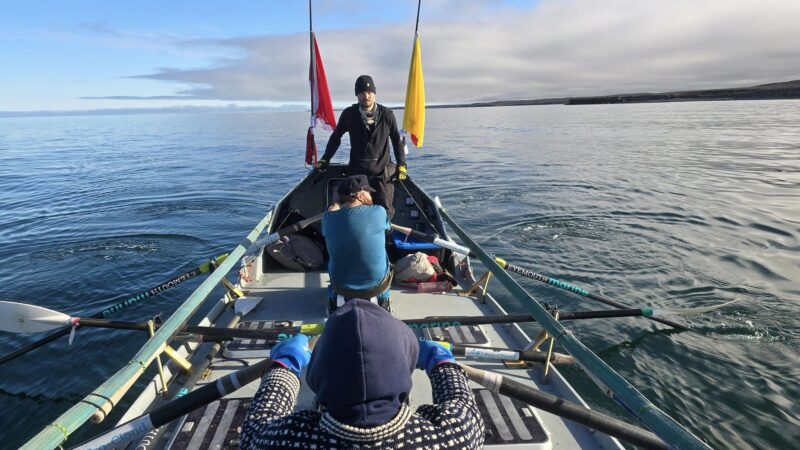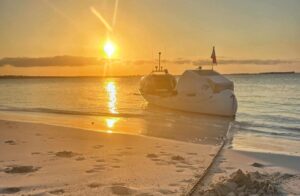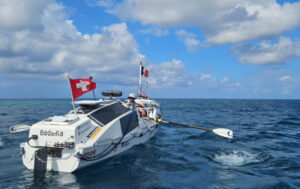Since our last ocean rowing roundup, all crews have ended their journeys, and not a single one crossed their intended finish line.
Atlantic Ocean
Tom Waddington: Waddington (UK) was attempting to cross the North Atlantic from Canada to the UK. Though new to the sport, he was aiming to break the 39-day speed record. With winds pushing against him almost every stroke of the way, he only hit the halfway mark on day 41.
He has spent days on the para-anchor waiting to row and only had the odd sporadic day with favorable conditions. He also capsized multiple times, damaging or losing some equipment, including his Emergency Position Indicating Radio Beacon (EPIRB). Then he had a change of fortune. The waves were big but they were moving in the same direction as he was. Surfing them, he began speeding toward the UK.
With just 152km to go, a new set of difficulties hit. Waddington had been aiming for Penzance, on mainland Britain. But strong southerly winds started pushing him north toward the Scilly Islands just off the coast from his finish line. His land team urged him to row as far south as possible to counteract the oncoming winds, but it wasn’t enough. He was still headed straight for Scilly.
His plan then morphed into rowing around the top of the islands. After rowing without rest for over 18 hours, he was completely exhausted. It became clear that he wouldn’t make it to Penzance.
With the wind and tides getting stronger, Waddington called the Royal National Lifeboat Institution (RNLI) to come and tow him to safety.
Patrick Favre: Favre (FR) has set a new speed record for solo rowing the North Atlantic. He rowed from Canada to Ireland in 32 days, breaking the previous record by seven days.
He initially started in Newfoundland but stopped after three days in Trespassey Harbour. Wind and heavy fog made rowing too dangerous. After two days, he picked up his oars and pointed the boat toward France. His record time was taken from his departure in Trespassey and does not count the initial three days.
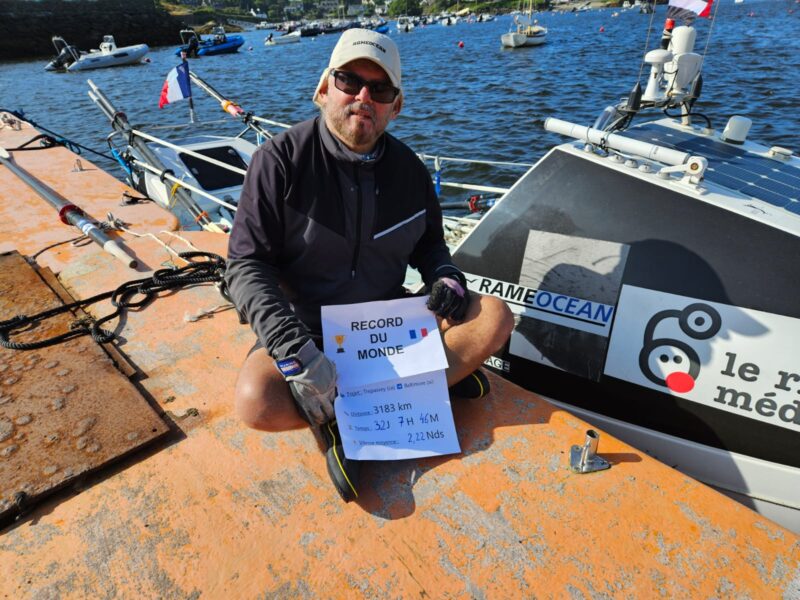
Patrick Favre breaks a speed record. Photo: Rame Ocean
Despite moving quickly, there were many tricky points. At the halfway mark, the winds kept pushing him off course. On day 18, he awoke to find himself in the same position that he started in on day 17, despite a full day on the oars in between. Thankfully, this was Favre’s ninth Atlantic crossing and he wasn’t phased.
“No crossing of the North Atlantic happens without a backward loop,” Favre commented.
In the later stages of the journey, he frequently used the para-anchor. During a day of 35-knot winds and 50-knot gusts, he capsized and the autopilot broke. Yet even in turbulent conditions, he was making good progress.
However, the wind and currents pushed him sideways, away from France. With strong headwinds on the horizon, it became vital he make land as soon as possible. His new finish line became the south of Ireland.
Around the UK
The Long Row Home: Allan Lipp and Mhairi Ross were attempting to row around the coastline of mainland Britain. They set off from Wick in the far north of Scotland on June 1 and rowed clockwise.
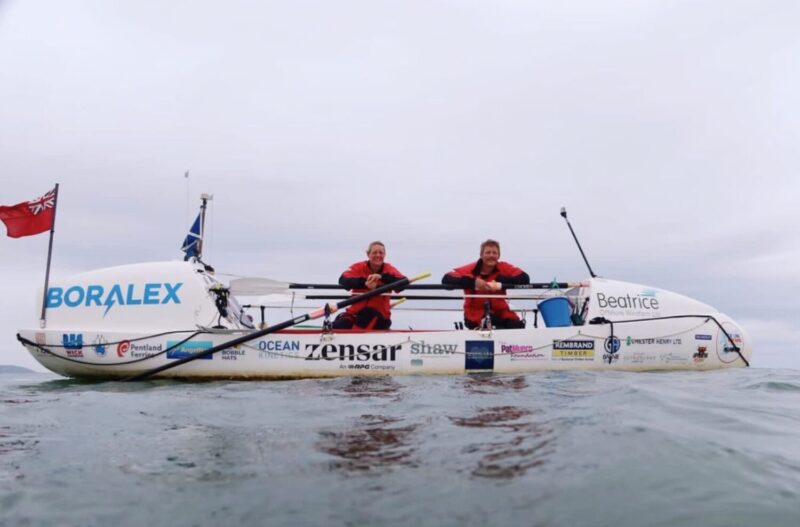
Photo: The Long Way Home
They had been hoping to break the 60-day record for the circumnavigation, but it was not to be. After 80 days, they paused their journey in Tobermory. Exhausted, they did not think it safe to continue in the forecast weather.
“We have hit the pause button on the row and are now in the marina at Tobermory. Getting to the start was hard. We have offered up nothing but blood, toil, sweat, and tears, as we tirelessly worked to succeed in our unsupported attempt to row around Britain. Our journey has taken us to places we never knew existed, mentally, physically, and at times geographically,” they wrote.
Northwest Passage
NWP Expedition: This crew has had a dramatic end to their traverse of the Northwest Passage. This year, they returned to finish the journey they started in 2023. Last year they rowed the first 1,950km of the route before the weather stopped them.
Though the Northwest Passage is always challenging, the remaining 1,950km to Herschel Island near the Canadian-Alaskan border is considered a marginally less challenging section. However, they’ve once again missed out on completing the journey.
At the end of August, they encountered a storm that resulted in their boat’s cabins filling with water. They estimate that the bow cabin alone had 150 liters of water in it. During the storm, “two of our three main anchors had been ripped off clean while the remaining anchor’s claws had also been ripped off,” Stefan Hacker said. After searching the hull, they found a three-and-a-half-foot crack.
Their next step was to motor as quickly as possible to Paulatuk. There, they could try to patch the boat up before motoring straight back to the site of the accident and finishing their row.
But before they could start, they needed some kind of temporary fix to move the boat at all. Skipper Leven Brown managed to fix the boat enough to relaunch her, but a few hours later, the emergency engine failed. Still, determined not to call in emergency services, the four-man crew rowed over 300km in a sinking boat over 10 days.
Eventually, they made it to Paulatuk.
“We assessed the damage to the boat in Paulatuk and it is too great to continue. Have we finished? For now at least,” Brown wrote on social media.
